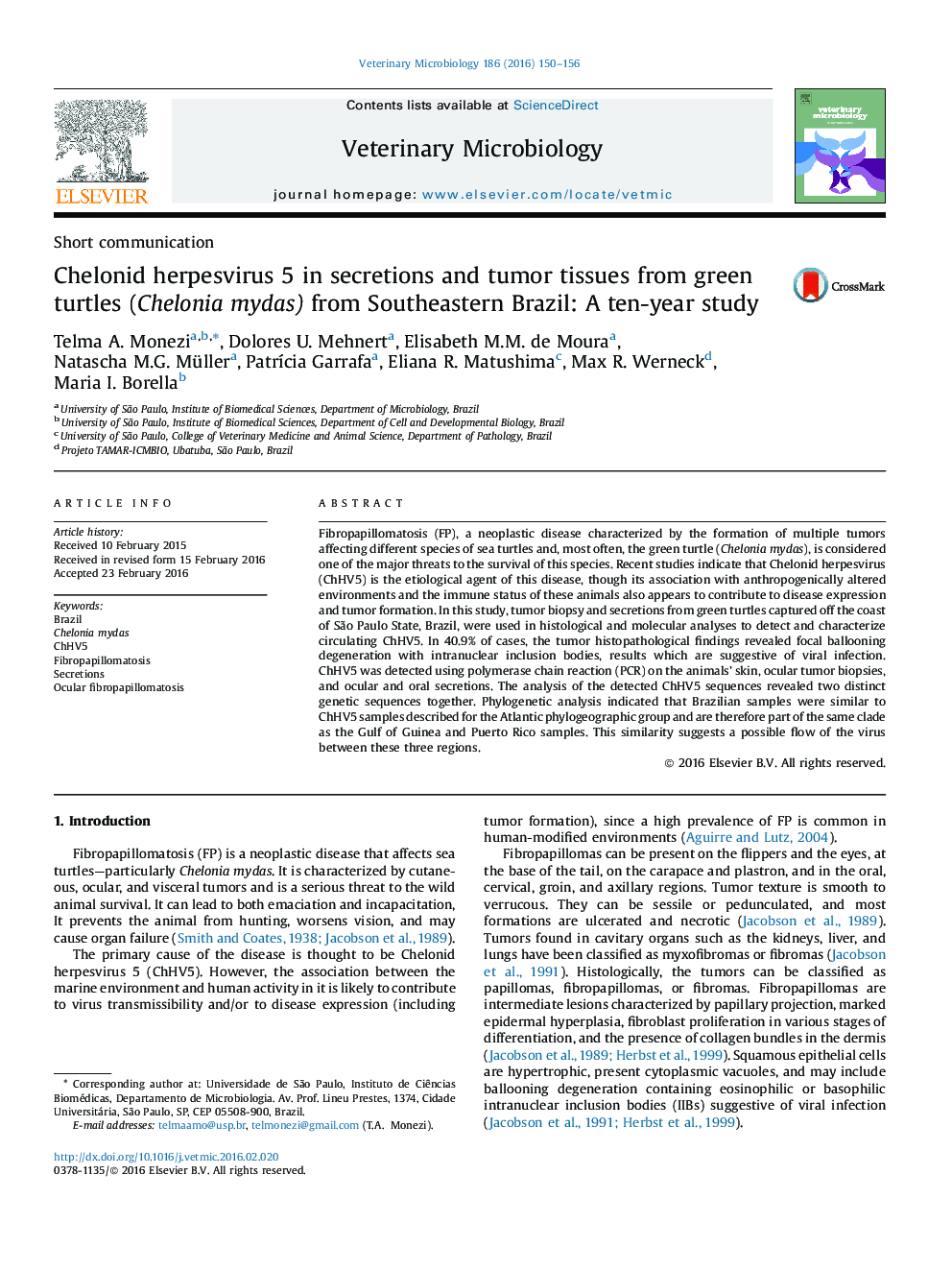| Article ID | Journal | Published Year | Pages | File Type |
|---|---|---|---|---|
| 5799735 | Veterinary Microbiology | 2016 | 7 Pages |
â¢Detection of ChHV5 genetic sequences in tumor tissues, ocular secretions and saliva from sea turtles in Brazilian waters.â¢Phylogenetic analyses showed two ChHV5 strains in Southeastern of Brazil from 2001 to 2011.â¢The obtained ChHV5 genetic sequences will contribute to the world database.
Fibropapillomatosis (FP), a neoplastic disease characterized by the formation of multiple tumors affecting different species of sea turtles and, most often, the green turtle (Chelonia mydas), is considered one of the major threats to the survival of this species. Recent studies indicate that Chelonid herpesvirus (ChHV5) is the etiological agent of this disease, though its association with anthropogenically altered environments and the immune status of these animals also appears to contribute to disease expression and tumor formation. In this study, tumor biopsy and secretions from green turtles captured off the coast of São Paulo State, Brazil, were used in histological and molecular analyses to detect and characterize circulating ChHV5. In 40.9% of cases, the tumor histopathological findings revealed focal ballooning degeneration with intranuclear inclusion bodies, results which are suggestive of viral infection. ChHV5 was detected using polymerase chain reaction (PCR) on the animals' skin, ocular tumor biopsies, and ocular and oral secretions. The analysis of the detected ChHV5 sequences revealed two distinct genetic sequences together. Phylogenetic analysis indicated that Brazilian samples were similar to ChHV5 samples described for the Atlantic phylogeographic group and are therefore part of the same clade as the Gulf of Guinea and Puerto Rico samples. This similarity suggests a possible flow of the virus between these three regions.
